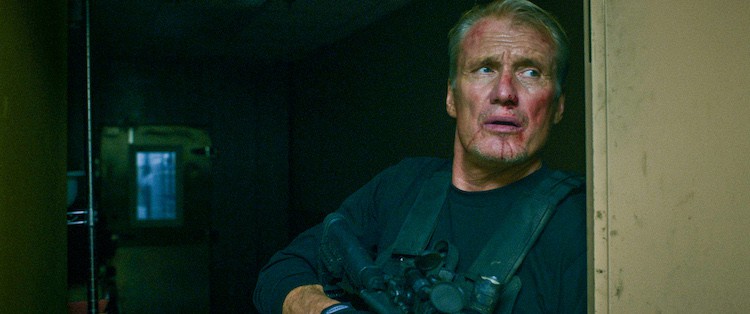In the space of a few breaths, "Saint Omer" highlights the humanity of its characters
There are a thousand and one ways to film a true crime story, but maybe only one, if the goal is to draw the audience's attention to the nuances of the characters in a way that inspires self-reflection, not judgment. "Saint Omer" does just that, largely because of the way director Alice Diop approaches cinematic form with a blend of documentary and storytelling techniques. The film is based on the real-life trial of a woman accused of killing her infant daughter, but this fictionalized narrative is not based at all on the strategic feints of the prosecution and defense, on the thrilling revelations of withheld information or crime scene recreations. Instead, Diop's precisely composed long takes simply compel us to sit back and listen to the story told by Laurence Coly (Guslagie Malanda).
In scripted feature films, there's usually a lot of unseen work done to help the audience focus on the drama at hand: from swapping one day's sky for another, to adapting the scenery sound to focus on dialogue until important incidental sounds should appear to establish or reinforce a framework. The courtroom in which much of "Saint Omeer" takes place has a slightly messier, but more realistic soundscape of rustling and extraneous noise. There's always a little human touch in the background, even when an infanticide trial is unfolding.
Related RelatedThe soundscape for "Saint Omer" was designed by sound editor Josefina Rodríguez and re-recording mixer Emmanuel Croset, a veteran of work on Frederick Wiseman documentaries. But Rodrígeuz, Croset and director Alice Diop take this more textured, more human soundscape and then choose, at the beginning, end and key moments of the film, to magnify the specific sounds of breathing. The simple, audible reminder that these people are alive keeps audiences from projecting tropes on them.
It's impossible for a reason. "It's a very intellectual and cerebral film but at the same time [it's] very empathetic, very felt," Diop told IndieWire, "[And all the feeling] comes through the extremely sophisticated sound work, led by my sound editing and my mixer.” Diop and his team leave some ambiguity as to whether or not the sounds are coming from Laurence Coly in the defendant's box or the novelist Rama (Kayije Kagame) watching from the benches, but with one purpose: the overwhelming presence of the sound and the lack of a clear source actually unites the two main characters.

There are a thousand and one ways to film a true crime story, but maybe only one, if the goal is to draw the audience's attention to the nuances of the characters in a way that inspires self-reflection, not judgment. "Saint Omer" does just that, largely because of the way director Alice Diop approaches cinematic form with a blend of documentary and storytelling techniques. The film is based on the real-life trial of a woman accused of killing her infant daughter, but this fictionalized narrative is not based at all on the strategic feints of the prosecution and defense, on the thrilling revelations of withheld information or crime scene recreations. Instead, Diop's precisely composed long takes simply compel us to sit back and listen to the story told by Laurence Coly (Guslagie Malanda).
In scripted feature films, there's usually a lot of unseen work done to help the audience focus on the drama at hand: from swapping one day's sky for another, to adapting the scenery sound to focus on dialogue until important incidental sounds should appear to establish or reinforce a framework. The courtroom in which much of "Saint Omeer" takes place has a slightly messier, but more realistic soundscape of rustling and extraneous noise. There's always a little human touch in the background, even when an infanticide trial is unfolding.
Related RelatedThe soundscape for "Saint Omer" was designed by sound editor Josefina Rodríguez and re-recording mixer Emmanuel Croset, a veteran of work on Frederick Wiseman documentaries. But Rodrígeuz, Croset and director Alice Diop take this more textured, more human soundscape and then choose, at the beginning, end and key moments of the film, to magnify the specific sounds of breathing. The simple, audible reminder that these people are alive keeps audiences from projecting tropes on them.
It's impossible for a reason. "It's a very intellectual and cerebral film but at the same time [it's] very empathetic, very felt," Diop told IndieWire, "[And all the feeling] comes through the extremely sophisticated sound work, led by my sound editing and my mixer.” Diop and his team leave some ambiguity as to whether or not the sounds are coming from Laurence Coly in the defendant's box or the novelist Rama (Kayije Kagame) watching from the benches, but with one purpose: the overwhelming presence of the sound and the lack of a clear source actually unites the two main characters.
What's Your Reaction?















![Three of ID's top PR executives quit ad firm Powerhouse [EXCLUSIVE]](https://variety.com/wp-content/uploads/2023/02/ID-PR-Logo.jpg?#)







